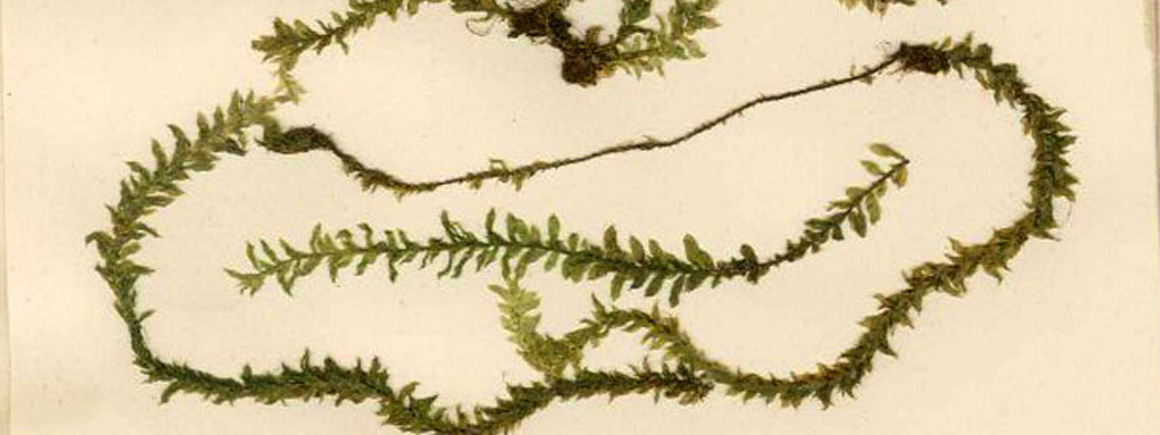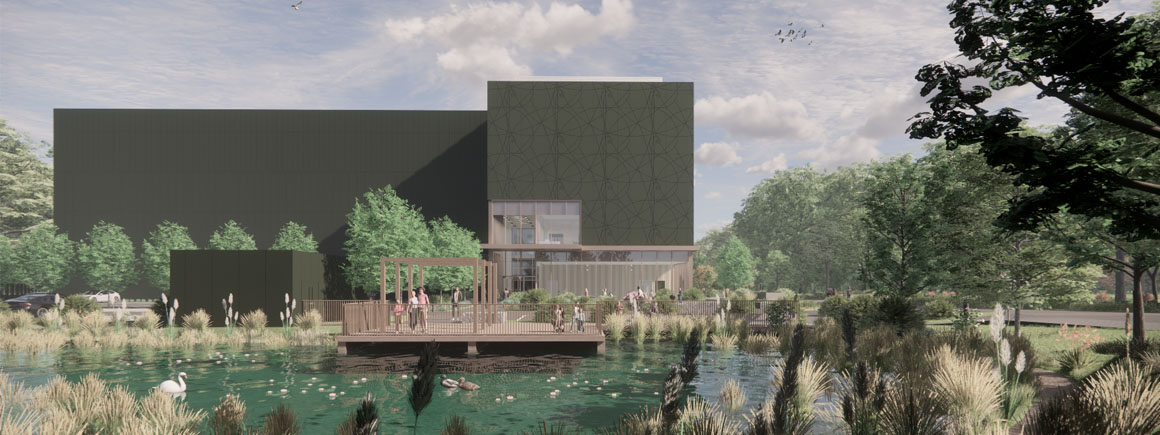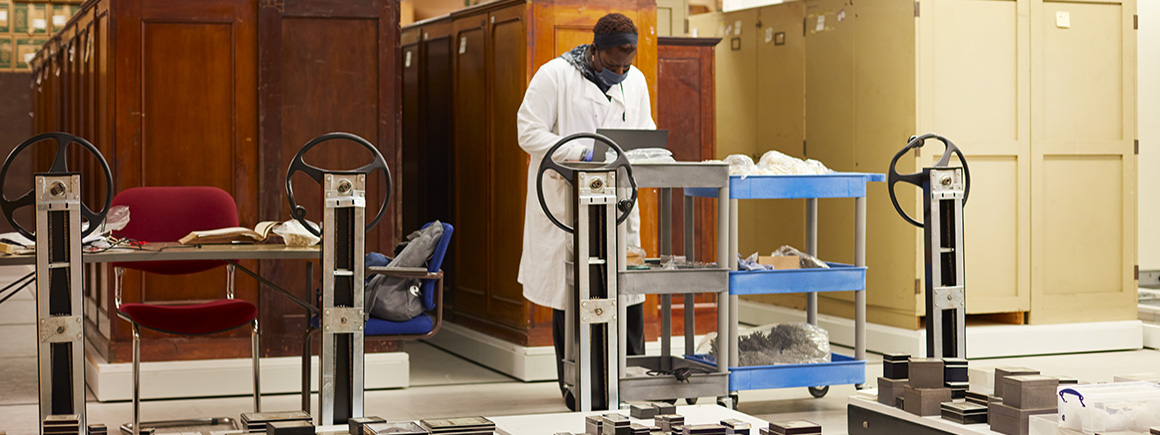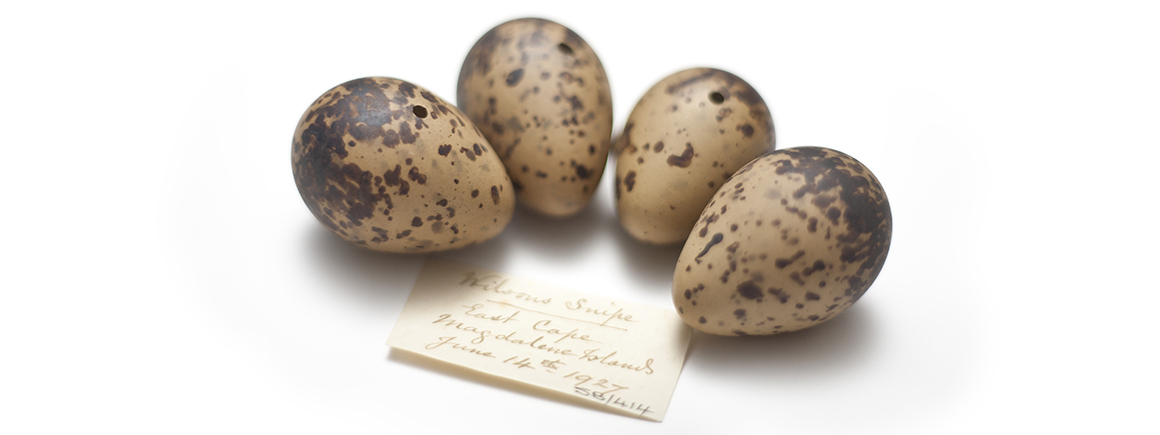Looking for a specimen?
The bryophyte collection is being digitised

Calyptrochaeta asplenioides, collected from Réunion Island in the eighteenth century
The collection provides a unique source of critical data for the international bryological community, supporting research on taxonomy, habitat conservation and environmental monitoring over historical periods of time.
Global: Arctic, boreal-temperate, tropical, austral-temperate, Antarctic
Late 17th Century - 21st Century
Most of the collections were accumulated by notable bryologists in the late eighteenth to early twentieth centuries. These pioneers of bryophyte taxonomy described thousands of new taxa from every continent, and consequently, the herbarium is rich in original material.
The herbarium is also rich in the specimens of pioneering early plant collectors, such as H. von Handel-Mazzetti, who collected in China, Humboldt & Bonpland in South America, GHK Thwaites in Sri Lanka and JD Hooker in Antarctica, India, and New Zealand.
Extensive recent collections of tropical and subtropical bryophytes have been made over the last 60 years, many by museum bryologists. Most significantly, these include material from Malaysia, Indonesia, the Indian subcontinent, the Seychelles and Mascarenes, New Zealand, and Ascension Island.
At home, in the United Kingdom, the Museum holds a large and ever-growing representation of British and Irish bryophytes, with collections ranging from historical to the contemporary.
The bryophyte collection is being digitised
If you would like to use any specimens for research, please get in touch.
910,000
32,100
Mosses (Bryophyta) 700,000
Liverworts (Marchantiophyta) 100,000
Hornworts (Anthocerotophyta) 1,200
Mosses (Bryophyta) 28,000
Liverworts (Marchantiophyta) 4,000
Hornworts (Anthocerotophyta) 100
Microscopic preparations 1,300
Bound volumes 7,500
Unmounted (backlogs) 100,000
Herbarium holdings range from the late 17th Century through significant landmarks in the history of bryophyte taxonomy, incorporating many of the earliest local and exotic collections and reflecting historical changes in the processes and rules of botanical nomenclature.
Adam Buddle (1662-1715) (part of the Sloane Herbarium, see Historical Collections).
James Dickson (1738-1822)
Robert Brown (1773-1858)
Dawson Turner (1775-1858)
William Hooker (1785-1865)
William Wilson (1799-1871)
Joseph Hooker (1817-1911)
Robert Braithwaite (1824-1917)
William Pearson (1849-1923)
Symers Macvicar (1857-1932)
Hugh Dixon (1861-1944)
Emile Bescherelle (1828-1903)
Philipp Bruch (1781-1847)
Ernst Hampe (1795-1880)
Wilhelm Schimper (1808-1880)
Franz Stephani (1842-1927)
The primary type material of some of the hundreds of new taxa described by the 19th century German bryologist Carl Müller (Hal.)was destroyed in World War II, but duplicates of a significant fraction of his original material are held in BM.
Vancouver Expedition 1791-1795 (collections by Archibald Menzies)
Flinders Expedition, HMS Investigator, 1801 (collections by Robert Brown)
Parry’s Arctic Voyages 1819-1820 (various collectors)
Challenger Expedition 1872-1876 (collector ‘Mr Moseley’)
Antarctic Voyage of HM Discovery Ships Erebus and Terror in 1839-1843 (collections by J.D. Hooker)
German Transit of Venus Expedition, SMS Gazelle, 1874 (incomplete range of collections by ‘Dr Naumann’)

Access to some collections will be affected as we prepare for the move to our new collections, science and digitisation centre.

Scientists and collections management specialists can visit the collections and borrow specimens for research.

Our duty is to provide a safe and secure environment for all of our collections.